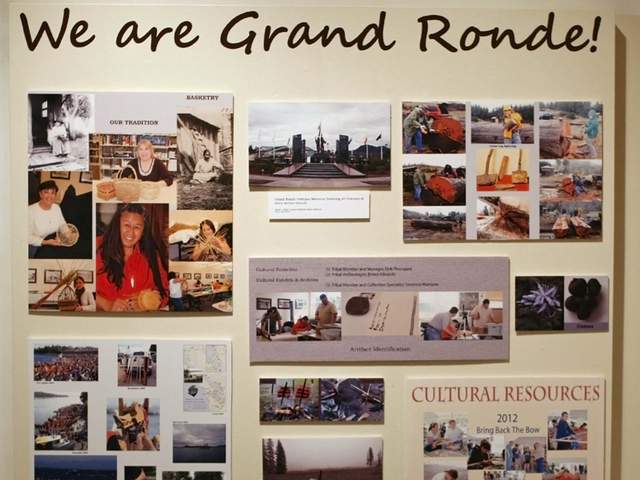Tis the season for food safety – fa-la-la-la-la, get flu shots, too!
Snohomish Health District
SNOHOMISH COUNTY, Wash. Nothing can ruin a party quite like food poisoning. According to the Centers for Disease Control and Prevention, there are 31 pathogens known to cause food-borne illness. Every year there are an estimated 48 million cases of illness, 128,000 hospitalizations, and 3,000 deaths in the United States due to food-borne diseases.
Keep all your guests healthy by following these food safety tips from the Snohomish Health District.
Proper planning. Make sure your kitchen has everything you need for safe food handling, including two cutting boards (one for raw meats and seafood and the other for ready-to-eat foods), a food thermometer, shallow containers for cooling and storage, paper towels and soap. Store foods in the refrigerator at 41°F or below or in the freezer at 0°F or below. Check the temperature of both the refrigerator and freezer with a refrigerator thermometer.
Safe shopping. At the grocery store, bag raw meat, poultry and seafood separate from ready-to-eat foods like fruit, vegetables and bread. Don’t buy bruised or damaged produce, or canned goods that are dented, leaking, bulging or rusted, as these may become a breeding ground for harmful bacteria. Buy cold foods last and bring foods directly home from the store. Always refrigerate perishable foods, such as raw meat or poultry, within two hours. Thaw frozen turkey in the refrigerator or under cold-running water. Never defrost the turkey at room temperature.
Working in the kitchen. Got extra helpers in the kitchen? Make sure everyone washes their hands thoroughly with warm water and soap for 20 seconds before and after handling food, visiting the restroom, or changing a baby’s diapers. Keep all work surfaces sanitized, too. Spray or wipe on a solution of 1 tsp of unscented bleach per gallon of cold water.
When baking holiday treats, remember that no one should eat raw cookie dough or brownie batter containing raw eggs. Make eggnog with pasteurized eggs and pasteurized milk, or simply buy it ready-made with those ingredients. Adding a nip of brandy or whiskey will not kill the germs. When making homemade eggnog, be sure to cook the mixture to 165°F, then refrigerate.
Cook. Food is safely cooked when it reaches a high enough internal temperature to kill the
harmful bacteria that cause illness. Cook your turkey to a minimum of 165°F as measured with a food thermometer, including the stuffing. The healthiest method is to prepare and cook the stuffing separately – outside the bird. Test the bird’s temp in the thickest part of the thigh, the breast, and the inside. Don’t let the tip of the thermometer rest against bone.
Potluck contributions. Remember to keep hot foods hot (135°F or higher) and cold foods cold (41°F or below). To help keep foods hot wrap dishes in foil, cover them in heavy towels, or put them in insulated containers designed to keep food hot. For cold foods, put them in a cooler with ice or freezer packs, or use an insulated container with a cold pack so they remain at 41°F or lower, especially if traveling for more than half an hour.
Buffet, anyone? If you set up food in a buffet line, take care to put spoons in each dish for self-service, and assist children in filling their plates. No fingers allowed!
Wrap it up! Throw away all perishable foods, such as meat, poultry, eggs and casseroles, left at room temperature longer than two hours. Refrigerate or freeze other leftovers in shallow, air-tight containers and label with the date it was prepared. Reheat leftovers to 165°F. Divide large amounts of leftovers into shallow containers for quicker cooling in the refrigerator. Keeping a constant refrigerator temperature of 41°F or below is one of the most effective ways to reduce the risk of an at-home food-borne illness.
Eat cooked turkey and stuffing within 3-4 days and gravy in 1-2 days. Cooked turkey keeps up to 4 months in the freezer. Reheat leftovers to 165°F as measured with a food thermometer, and bring gravy and sauces to a boil before serving. Microwaved leftovers shouldn’t have cold spots (bacteria can survive). Cover food, stir and rotate for even cooking.
Following these food safety steps at your house will make the meal a happy memory for everyone. Happy, healthy holidays from the Snohomish Health District!
Additional resources:
Free kit
The Holiday Food Safety Success Kit at www.holidayfoodsafety.org provides food safety advice and meal planning in one convenient location. The kit includes information on purchasing, thawing and cooking a turkey; a holiday planner with menus, timelines, and shopping lists; and dozens of delicious (and food-safe) recipes. The kit also has arts and crafts activities and downloads for kids so they can join the holiday fun.
U.S. Food and Drug Administration
1-888-SAFEFOOD: For questions about safe handling of the many foods that go into a delicious holiday meal, including eggs, dairy, fresh produce and seafood.
—
* Typical symptoms of food-borne illness are vomiting, diarrhea, and cramps which can start hours to days after contaminated food or drinks are consumed. The symptoms usually are not long-lasting in healthy people—a few hours or a few days—and usually go away without medical treatment. But food-borne illness can be severe and even life-threatening to anyone, especially those most at risk such as infants and young children, pregnant women, older adults, people with HIV/AIDS, cancer or any condition or medication that weakens the immune system.














